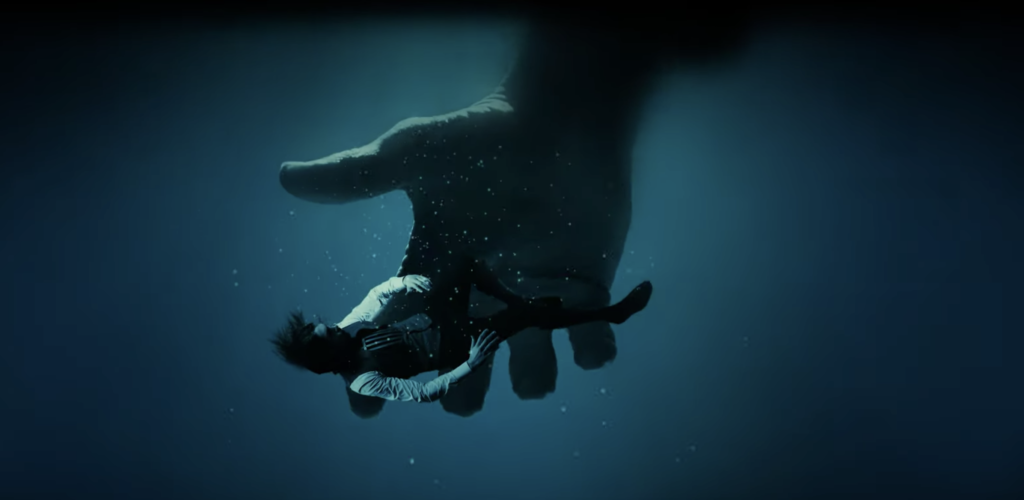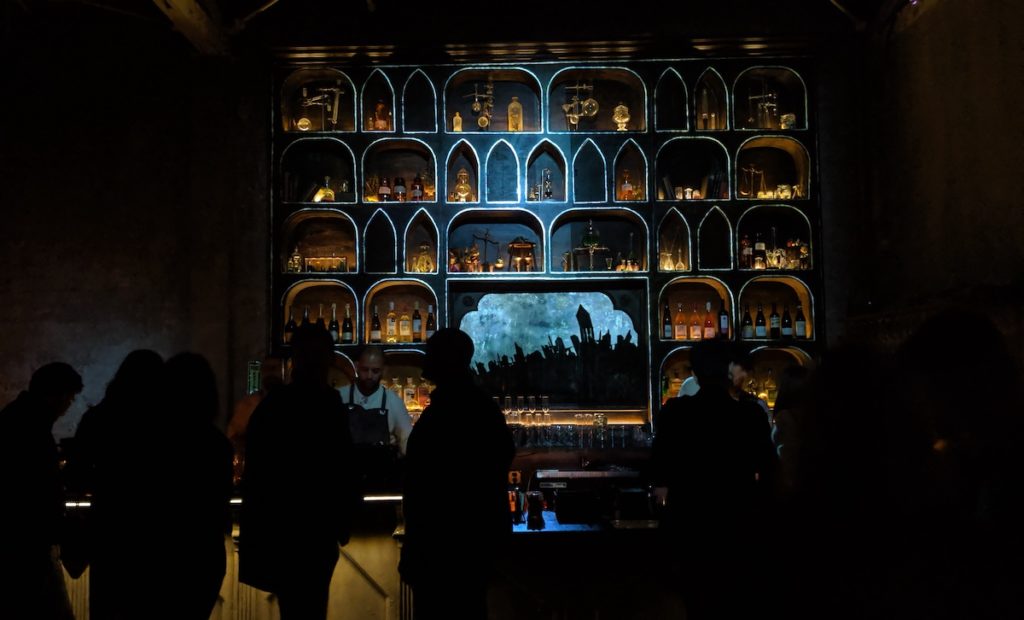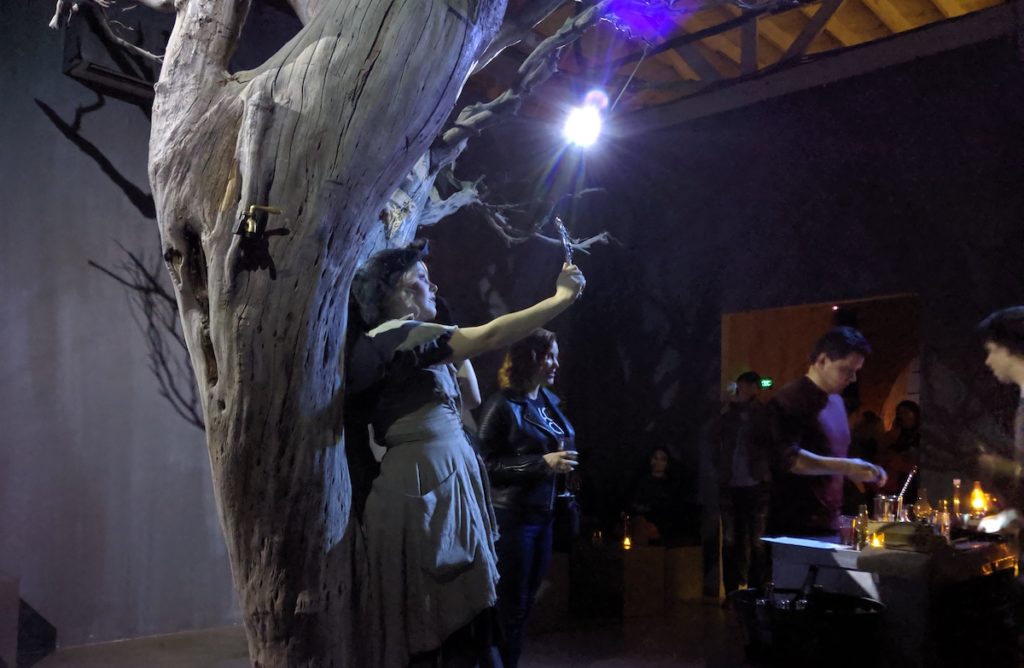
CAGES, a new pop-rock musical from duo Woolf and the Wondershow, is a spectacle unlike anything most theater-goers have seen before. It’s psychedelic and stunning, pushing the boundaries of what can be done on stage with a little magic. Even if you think you don’t like musicals, you might like CAGES—if only because the notion of spending a couple of hours inside a 3-D German Expressionist film is just too bizarre to pass up.
The narrative won’t be unfamiliar to anyone who’s seen a Disney movie, read a Shakespeare play, or listened to a fairytale. It’s about a love that cannot be and a couple who does it anyhow—so, perfect musical fodder. But what matters here isn’t so much the plotline, but the execution. That execution is based on the partnership that brought this production to life.
Songwriter/producer CJ Baran and composer Benjamin Romans formed Woolf and the Wondershow after meeting six years ago and discovering several shared influences and interests. At one point, Baran asked Romans if he’d be interested in being a band.
“He just looked at me dead in the eye and said, ‘Hell, no, I’d never be in a band again. I never want to push another Marshall stack onto a van ever again. But he said I would be in a brand with you if there’s a narrative and a story,'” Baran recalls. “And that’s kind of how it started.”
The pair soon wrote a song called “Cages.” It’s the ideal tune for a modern musical: Romans’ eclectic sensibilities for everything from classical to pop complements Baran’s impressive range and emotive singing. It’s this song that eventually blossomed into the full show.

To see it, you’ll head down to an otherwise nondescript building in the Arts District that Baran and Romans spent several years converting into a theater. Guests spend the first 45 minutes in a bar that serves beer, wine and four craft cocktails, each named after a different emotion: Lust, Rage, Sadness, and Love. Actors may wander in and out of the space, each dressed like someone who’s just escaped a Tim Burton film. You may note they all seem to wear what looks like a wrought-iron rib cage over their chests. Eventually, you’ll be invited to witness an execution. That’s your cue to take your seats.
Now you’re in the heart of Anhedonia, a monochrome dystopia whose jutting skyline and winding alleys look like they’ve been plucked from The Cabinet of Dr. Caligari (1920). In this bleak world, emotion is outlawed. Its residents must keep their hearts in “cages.” Marriages are prearranged by an unfeeling algorithm. Citizens who are deemed to have any kind emotional outburst are either publicly executed or sent to the Emotional Correctional Facility to have them forcibly expunged. It’s not so far off from the real-life horrors of early asylums, electroshock therapy, and the transorbital lobotomy. “Anhedonia” may be a city in CAGES, but it’s also an actual condition in which someone is unable to feel pleasure or joy.
Woolf (played by Baran) grew up in Anhedonia as an orphan. Now, he’s a reclusive musician, conjuring sounds out of an apparatus he’s built. He always stands slightly hunched over, hair hanging in his face, like a younger Riff-Raff (Rocky Horror, not the rapper). One day, Woolf happens upon a young woman, Madeline. Struck by the wide-eyed beauty’s whimsy and grace, he woos her with his music. It’s a bit like The Phantom of the Opera, only Madeline actually loves him back—which is, of course, forbidden. Woolf must use the new sensations percolating in his bound heart to discover who he really is.
But what’s especially incredible about CAGES is the way it all comes together. There is very little in the way of a tangible set and Woolf is frequently the only character that’s physically on stage. But, using layers of projections, guests see what appears to be a gorgeous, three-dimensional wonder-nightmare. From the opening scene, when a sea of Victorian-garbed Anhedonians (most of whom aren’t really there) cross through misty streets, you’re left wondering, “Wait, how are they doing this?” There are moments where it looks like Woolf is tearing through a forest of gnarled branches or adrift in a sea of tears, being serenaded by the moon. Occasionally, Woolf interacts closely with a performer who isn’t there, though you could swear they were. A key example is Madeline (voiced by Frida Sundemo and played by Allison Howard). We’re essentially watching Woolf romance a projection.

“What we were really inspired to do as a creative production company was [to] bring the magic of movies to the stage,” Baran said. “And once we started toying around with the tech, we realized we can do anything. Someone can melt, someone can stretch, you can have a duet with your inner demon. Anything’s possible.”
“One of the most exciting things is that [by using projection], you can go forward, backward, up, down, and disappear behind light,” Romans adds.
And indeed, there are moments where Woolf is so real you can see the sweat on his brow. Then he’s a moving cut-out silhouette, plummeting through space.
The score itself is catchy, with many memorable themes that repeat throughout. Sometimes it’s a delicate piano melody, while other times it’s bombastic pop-rock. Romans live-scores from a lofted DJ booth, outfitted like a cross between Victor Frankenstein and Beethoven. He does come down from his perch at least once, but I won’t spoil his moment.
After the show and during intermission, it may behoove you to poke around and explore the immersive elements scattered throughout the space. In the Emotional Correctional room, you might find the patient file of a character you’ve come to know. In a cluttered study near the entrance, you’ll find vials of emotions and elixirs. Bills posted in an alley call for Woolf’s capture.
If CAGES sounds like your cup of tea, it’d be wise to book a ticket early. The show opens on Dec. 5, but the theater only seats 100 per night. And if you want to see more theater that incorporates projection, the LA Opera‘s famed take on Mozart’s The Magic Flute is back in season through Dec. 15.
CAGES is located at 1926 E 7th Place in the Arts District. Tickets start at $50.



